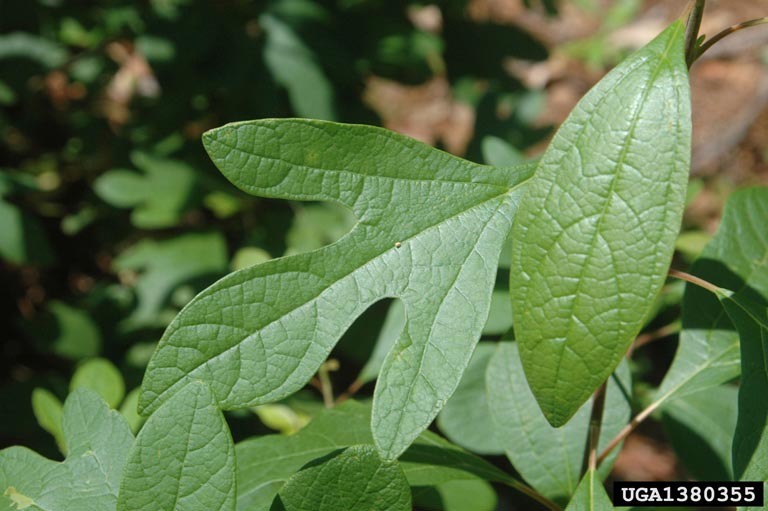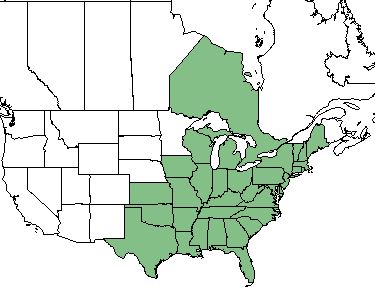Difference between revisions of "Sassafras albidum"
(→Ecology) |
(→Ecology) |
||
| Line 43: | Line 43: | ||
<!--===Seed dispersal===--> | <!--===Seed dispersal===--> | ||
<!--===Seed bank and germination===--> | <!--===Seed bank and germination===--> | ||
| − | <!--===Fire ecology===--> <!--Fire tolerance, fire dependence, adaptive fire responses--> | + | <!--===Fire ecology===--> |
| + | Sassafras prefers environments that are subject to spring burns. They will be abundant in understory that is burned in late winter and spring burns. <ref name="kush">Kush, J. S., et al. (1999). "Understory plant community response after 23 years of hardwood control treatments in natural longleaf pine (Pinus palustris) forests." Canadian Journal of Forest Research 29: 1047-1054.</ref> | ||
| + | <!--Fire tolerance, fire dependence, adaptive fire responses--> | ||
<!--===Pollination===--> | <!--===Pollination===--> | ||
===Use by animals=== | ===Use by animals=== | ||
Revision as of 14:53, 11 June 2018
Common Names: Nees sassafras [1]
| Sassafras albidum | |
|---|---|

| |
| Photo by Chris Evans, University of Illinois, Bugwood.org hosted at Forestryimages.org | |
| Scientific classification | |
| Kingdom: | Plantae |
| Division: | Magnoliophyta - Flowering plants |
| Class: | Magnoliopsida - Dicots |
| Order: | Laurales |
| Family: | Lauraceae |
| Genus: | Sassafras |
| Species: | S. albidum |
| Binomial name | |
| Sassafras albidum (Nutt.) Nees | |

| |
| Natural range of Sassafras albidum from USDA NRCS Plants Database. | |
Contents
Taxonomic Notes
Synonym: S. albidum var. molle (Rafinesque) Fernald
Variety: none
Description
S. albidum is a perennial shrub/tree of the Lauraceae family that is native to North America. [1]
Distribution
S. albidum is found throughout the eastern United States as far west as Texas and Kansas, as well as Ontario, Canada. [1]
Ecology
Habitat
Habitats for S. albidum include forests, old fields, disturbed areas and even fencerows. [2]
The tree prefers low pH soils. [1]
Specimens of this species have been taken from Moist loam at edges of woods, shaded mixed hardwoods region, fence rows, oak woodland, edge of orange groves, old foeld, river bluff, moist woods, limestone soil site, and a roadbank. [3]
Phenology
March is the primary month for S. albidum to flower. [4] Sassafras prefers environments that are subject to spring burns. They will be abundant in understory that is burned in late winter and spring burns. [5]
Use by animals
The fruit produced by the tree is commonly eaten by animals and in turn disperse the seeds. Such animals include, quail, wild turkeys, kingbirds, crested flycatchers, mockingbirds, sapsuckers, pileated woodpeckers, yellowthroat warblers, and phoebes. Other animals will eat the fruit, bark and wood as well; black bears, beavers, rabbits, and squirrels. Also, deer will forage in the foliage. [1]
Diseases and parasites
Insects will eat the entire leaves and the plants can develop root rot is they are in an environment with wet clay soil. [1]
Conservation and Management
Cultivation and restoration
Photo Gallery
References and notes
- ↑ 1.0 1.1 1.2 1.3 1.4 1.5 USDA Plant Database
- ↑ Weakley, A. S. (2015). Flora of the Southern and Mid-Atlantic States. Chapel Hill, NC, University of North Carolina Herbarium.
- ↑ URL: http://herbarium.bio.fsu.edu. Last accessed: June 2018. Collectors: Loran Anderson, Kathy Craddock Burks, Gary R. Knight, R.K.Godfrey, Patricia Elliot, Sidney McDaniel, Richard S. Mitchell, Elmar C. Prichard, Lovett Williams Jr., H. Kurz, Gwynn W. Ramsey, H. Larry E. Stripling, Wayne R. Faircloth, M. Garland, Delzie Demaree, Kurt E. Blum, Gary H. Morton, Frank Bowers, Robert. L. Lazor, John Moore, H.A. Wahl, John W. Thieret, Michael Cartrett, R. F. Doren, Clarke Hudson, Norlan C. Henderson, W.J. Taylor, S.B. Jones, States and counties: Florida (Leon, Jefferson, Jackson, Liberty, Volusia, Madison, Washington, Gadsden, Franklin, Wakulla) Georgia (Brooks, Stewart, Thomas), Virginia (Smyth, Giles), Arkansas (Saline, St. Francis), Tennessee (Summer, Campbell, Davidson), West Virginia (Monroe), Louisiana (Tangipahoa, Claiborne, Caddo), North Carolina (Macon, Wake), Mississippi (Covington, Jasper, Pike, Giles), Missouri (McDonald, Iron), Maryland (Anne Arundel), Louisiana (Beauregard, Bienville, Madison), Alabama (Colbert), New Jersey (Weston, Somerset), Pennsylvania (Juniata), Indiana (Huntington, Newton, Huntington)
- ↑ Pan Flora
- ↑ Kush, J. S., et al. (1999). "Understory plant community response after 23 years of hardwood control treatments in natural longleaf pine (Pinus palustris) forests." Canadian Journal of Forest Research 29: 1047-1054.